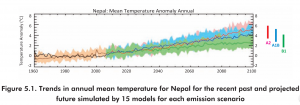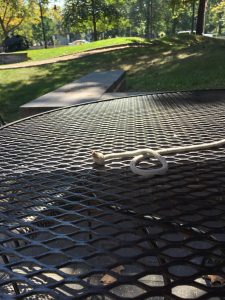In my time researching for the essay on evaluating the credibility of President Donald Trump’s statements as he announced the country’s withdrawal from the Paris Climate Accords, I came across an article from the Institute for Energy Research (IER) on the topic of carbon dioxide emission reductions. After briefly skimming the article I had already noted several instances of bias, and so I began to look into what IER publishes.
The Institute for Energy Research is a nonprofit public policy think tank based in Washington, DC. Most of their publications focus on government regulation of the energy industry. None of those attributes send up a red flag on their credibility, but taking a closer look at the organization’s donors does. I often spend a couple minutes researching an organization or author of assigned readings, and one of the biggest indictors of bias is affiliation with other particularly biased groups. I ask myself what the motivation of the author and these groups is in publishing an article or report. Upon examining IER, I discovered that they regularly receive donations from the United States multinational oil and gas corporation ExxonMobil, the largest US trade association for the oil and natural gas industry the American Petroleum Institute, and the largest private-sector coal company in the world, Peabody Energy. It is not in the interest of these businesses to fund research that would endanger their profits, and I therefore question the credibility of scientific reports from IER. If they wanted to continue receiving funding, it makes sense that they would publish material supporting energy industry rhetoric.
Another indication of potential untrustworthiness of a source is the language used in the writing itself. I noticed that in the article detailing the United States’ decrease in carbon dioxide emission rates, the language used was far from neutral. Words with strong positive or negative connotations related to politicians or policies along a clearly partisan line. Facts should not be manipulated to fit along political divides. In a perfect world, policy would be implemented that correlates with what facts are communicating is happening in reality. The IER website seems to have nothing beneficial to say about renewable energy sources such as wind or solar. The organization does its best to make its reports sound academic and factual. However, a big indicator that they are not as credible as they would prefer to be is that these studies are not peer-reviewed. Examining the literature on topics such as climate change actually illustrates a widespread disagreement with IER’s stance.
The IER website devotes an entire topic page covering climate change and stating that reducing carbon emissions or transitioning away from fossil fuels is not the right answer. Whether or not these views are true, I would be skeptical of considering these articles credible sources. The motivation behind these publications is to defend energy companies, discredit the majority of climate scientists, and create confusion in the public on environmental issues.
Works Cited
The Institute for Energy Research.” IER, instituteforenergyresearch.org
“U.S. Outshines Other Countries in CO2 Emissions Reductions.” IER, 6 May 2016, instituteforenergyresearch.org/analysis/u-s-outshines-countries-carbon-dioxide-emissions-reductions








